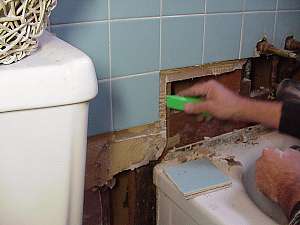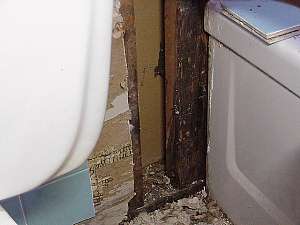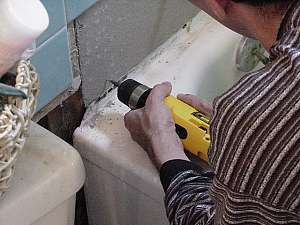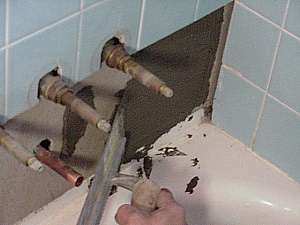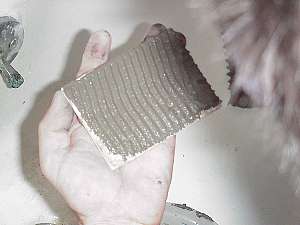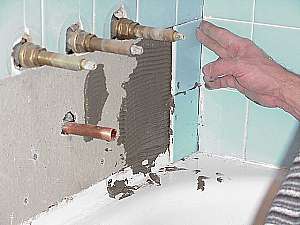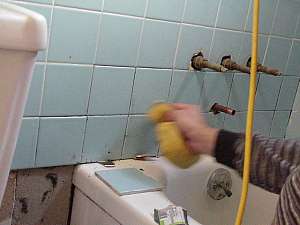|
Remove Hardware and Loose Tiles
The first thing to do is to remove the hardware, if
necessary. Tub faucets usually have a screw to hold the handles on. This screw
is sometimes concealed behind a plate on the handle. You may have to use a
razor to pry the cover off. Next, you have to remove the spigot. First,
inspect the spigot, if there is a hole on the bottom side with an allen-head
screw in it, remove the screw and then the spigot. If not, there is a threaded
piece of copper (or, rarely, galvanized) pipe inside of the spigot. Place a rag
on the spigot (if you want to keep it) and use a pipe wrench to twist it off.
BE CAREFUL not to twist the copper pipe that the spigot is normally attached
to. If you do twist it, you will have to cut the elbow off and sweat a new
piece on. If you need help sweating pipe, click here. If you are working
in a tub or sink, you should plug the drain before you go any further so that
the debris do not accumulate in the drain.
Remove Tile
Remove the loose tile. You should remove whole
courses so that you have straight lines to work with. If you are planning to
re-use the old tile, extra care must be taken to ensure that you do not break
the tile. Do not pry to heavily on the pieces as they will snap.
The grout can hold the tiles together and needs to be
removed. Using a razor knife, cut out as much grout as possible between the
tiles. Make several passes on each joint. Next, work on the loosest tiles
first. You may have to lightly pry on the tiles to get them off. Once you have
the first tiles off, you can use a hand scraper to pry the tiles off. Try to
get the scraper as far behind the tiles as possible before you pry. This will
minimize the possibility of breaking the tiles. You should remove tiles until
you get to a course of tiles that are still firmly attached. This usually the
first course above the valves. Tapping on the tiles can help you figure out
which ones are in good shape. Bad tiles will sound hollow, move or simply fall
off the wall.
One other item, make sure that you note where the
tiles came from. If some of them are cut or notched you should make sure you
keep track of where they go.
|
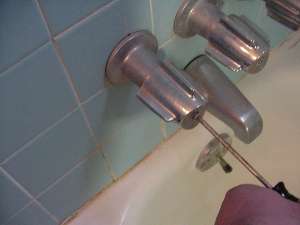
|



